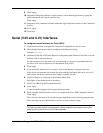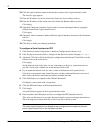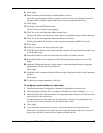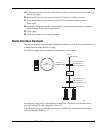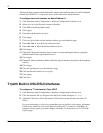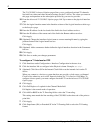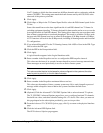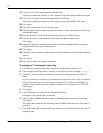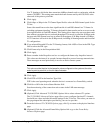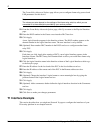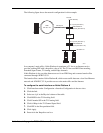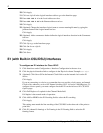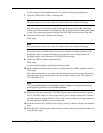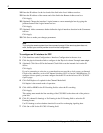
Nokia Network Voyager for IPSO 4.0 Reference Guide 91
Use T1 framing to divide the data stream into 64 Kbps channels and to synchronize with the
remote CSU/DSU. This setting must match the frame format used by the CSU/DSU at the
other end of the point-to-point link.
9. Click Apply.
10. Click 64bps or 56bps in the T1 Channel Speed field to select the DS0 channel speed for the
T1 line.
Some older trunk lines use the least-significant bit of each DS0 channel in a T1 frame for
switching-equipment signaling. T1 frames designed for data transfer can be set to not use the
least-significant bit of each DS0 channel. This setting allows data to be sent over these trunk
lines without corruption but at a reduced throughput. This mode is called the 56 Kbps mode
because each DS0 channel now has an effective throughput of 56 Kbps instead of 64 Kbps.
All T1 functions still work in the 56 Kbps mode, including all framing modes and fractional
T1 configurations.
11. If you selected Extended SF as the T1 Framing format, click ANSI or None in the FDL Type
field to select the FDL type.
12. Click the PPP in the Encapsulation field.
13. Click Apply.
A logical interface appears in the Logical Interfaces table.
14. Enter a number in the Keepalive text box to configure the PPP keepalive interval.
This value sets the interval, in seconds, between keepalive protocol message transmissions.
These messages are used periodically to test for an active remote system.
Note
This value must be identical to the keepalive value configured on the system at the other
end of a point-to-point link, or the link state fluctuates.
15. Click Apply.
16. Enter a number in the Keepalive maximum failures text box.
This value sets the number of times a remote system may fail to send a keepalive protocol
message within a keepalive interval before the systems considers the link down.
17. Click Apply.
18. (Optional) Click the Advanced T1 CSU/DSU Options link to select advanced T1 options.
The T1 CSU/DSU Advanced Options page allows you to configure fractional T1 channels,
line build-out values, and other advanced settings for a T1 device. The values you enter on
this page depend on the subscription provided by your service provider.
19. From the Advanced T1 CSU/DSU Options page, click Up to return to the physical interface
page.
20. Click the Advanced PPP Options link.
The PPP Advanced Options page appears.



